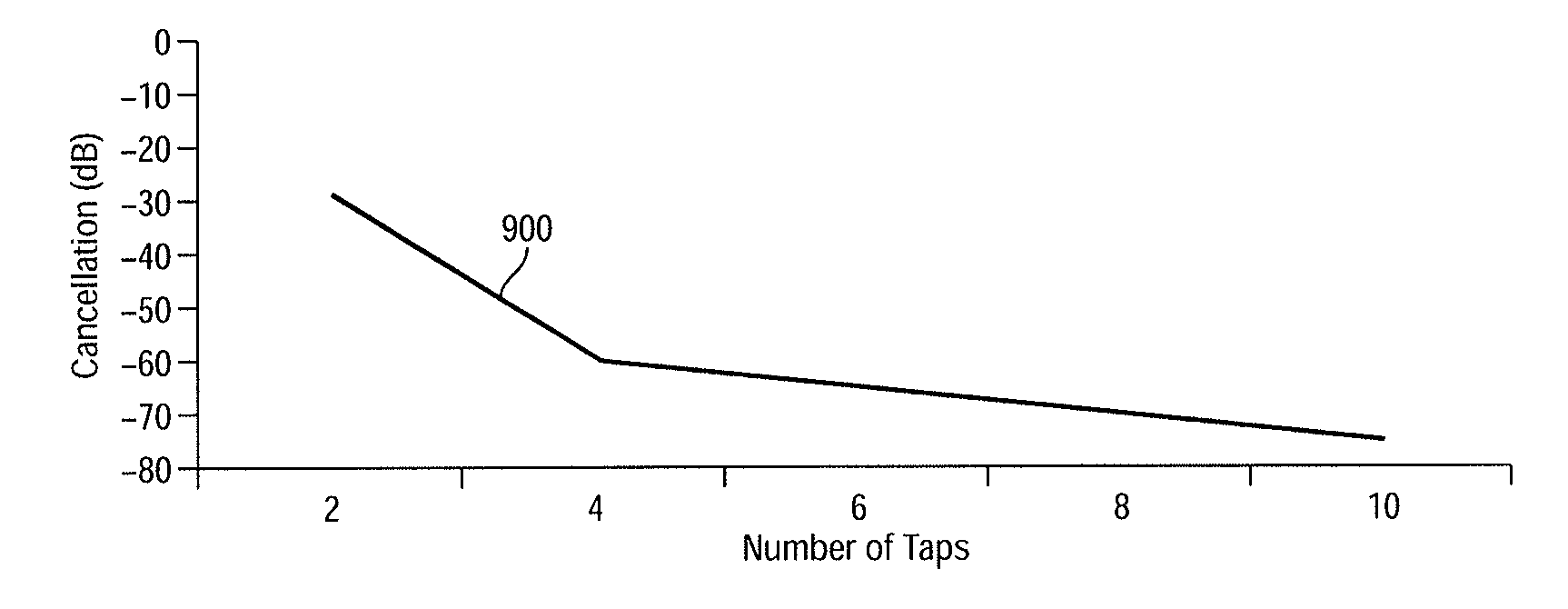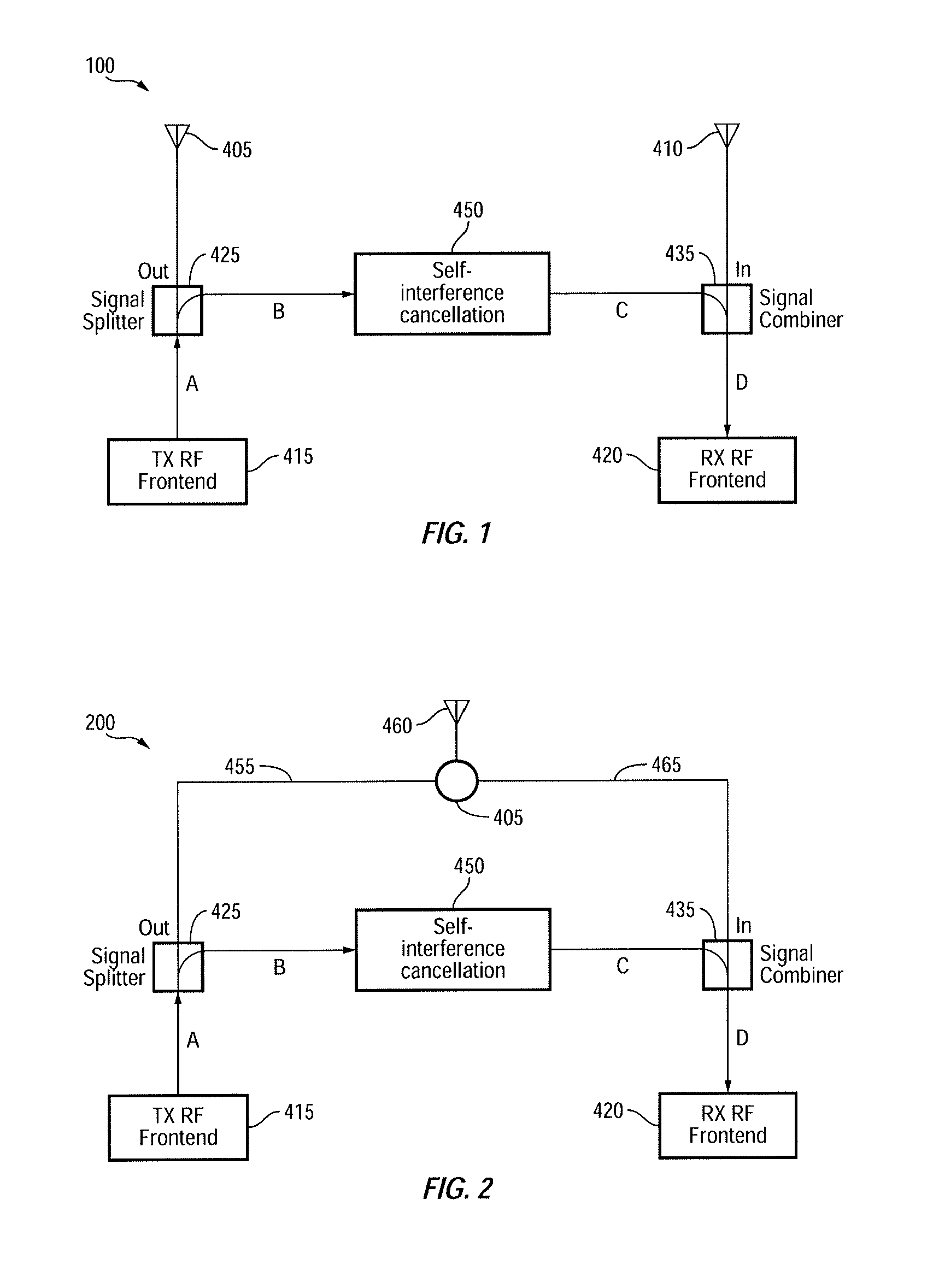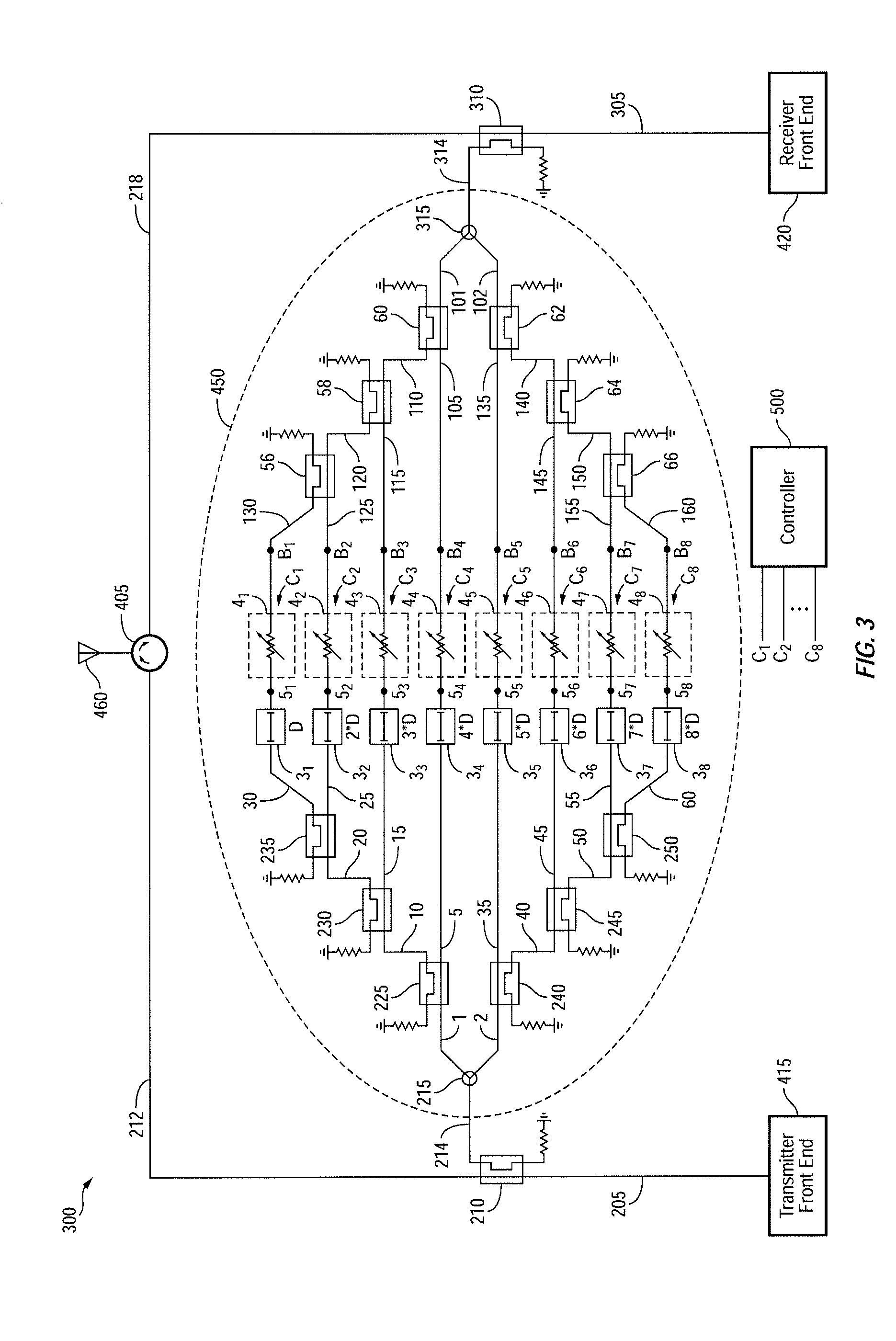Feed forward signal cancellation
a technology of forward signal and cancellation, applied in the field of full-duplex wireless communication system, can solve problems such as system ineffective reception of desired signals, and achieve the effect of reducing self-interference signals
- Summary
- Abstract
- Description
- Claims
- Application Information
AI Technical Summary
Benefits of technology
Problems solved by technology
Method used
Image
Examples
Embodiment Construction
[0026]FIG. 1 is a simplified block diagram of a full-duplex wireless communication device 100, in accordance with one embodiment of the present invention. Wireless communication device 100, which may be a cellular phone, a base station, an access point or the like, is configured to transmit data / signals via transmit antenna 405 and receive data / signals via a receive antenna 410. Wireless communication device (herein alternatively referred to as device) 100 is also shown, as including, in part, a transmit front-end 415, a signal splitter 425, a receive front end 420, a signal combiner 435, and a self-interference cancellation circuit 450. Device 100 may be compatible and operate in conformity with one or more communication standards such as WiFi™, Bluetooth®, GSM EDGE Radio Access Network (“GERAN”), Universal Terrestrial Radio Access Network (“UTRAN”), Evolved Universal Terrestrial Radio Access Network (“E-UTRAN”), Long-Term Evolution (LTE), and the like.
[0027]Transmit front-end 415 ...
PUM
 Login to View More
Login to View More Abstract
Description
Claims
Application Information
 Login to View More
Login to View More - R&D
- Intellectual Property
- Life Sciences
- Materials
- Tech Scout
- Unparalleled Data Quality
- Higher Quality Content
- 60% Fewer Hallucinations
Browse by: Latest US Patents, China's latest patents, Technical Efficacy Thesaurus, Application Domain, Technology Topic, Popular Technical Reports.
© 2025 PatSnap. All rights reserved.Legal|Privacy policy|Modern Slavery Act Transparency Statement|Sitemap|About US| Contact US: help@patsnap.com



